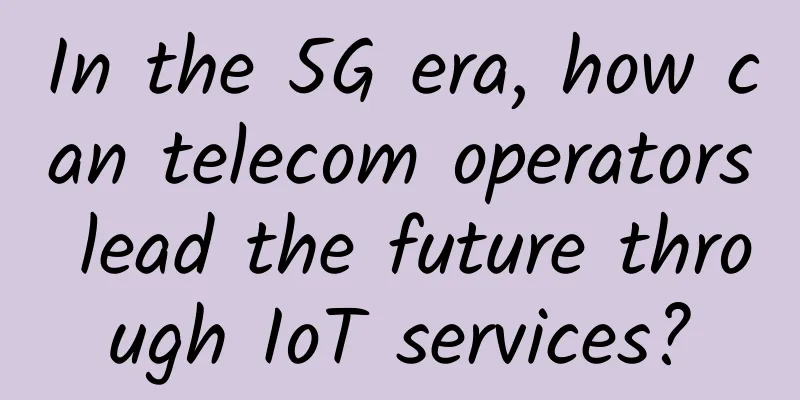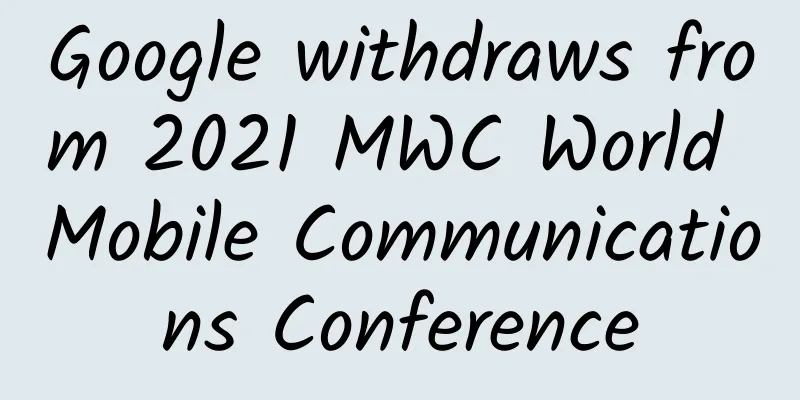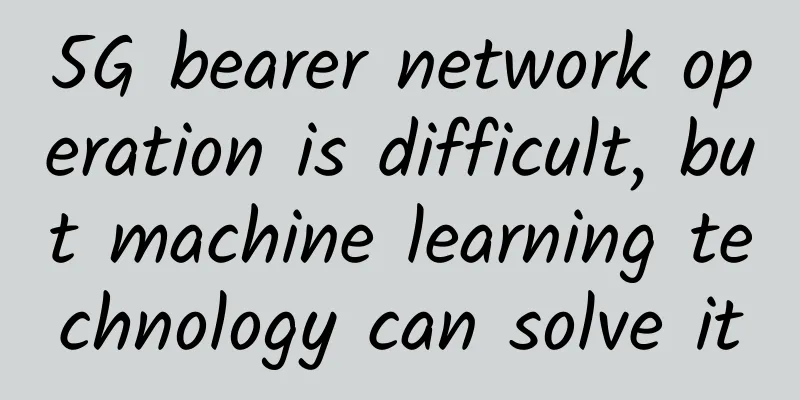Don’t just focus on 5G MEC, take some time to look at the MEC application scenarios in 4G

|
Mobile edge computing (MEC) has attracted a lot of attention recently because it is a fundamental part of the fifth generation (5G) mobile architecture. While this attention is often focused on how it enables ultra-low latency and ultra-high definition use cases, MEC improves more than just the user experience. More importantly, it provides mobile operators with tools for pricing power, as well as new revenue and market differentiation opportunities. It also gives operators the ability to break away from the status quo. More directly, integrating MEC platforms into the 4G architecture creates the edge Internet, bridging the gap to the 5G architecture.
When most people in the telecommunications industry think about MEC, they focus on how to move content, applications, computing and other resources to the edge of the network to achieve faster performance. This development trend helps cellular technology gain favor for applications that are highly sensitive to latency. A typical example is vehicle-to-vehicle and vehicle-to-infrastructure (V2V/V2I) applications. But even industry insiders often don’t know how much MEC can actually do; specifically, they don’t understand how 5G can provide operators with new business models and a sustainable competitive position, as well as increased revenue. There is also a widespread misunderstanding about when operators can start taking advantage of edge internet. The fact is that while 5G requires MEC, MEC does not require 5G. Edge internet can already be applied on 4G networks. First-mover advantage 5G has a completely different architecture from 4G, which means that operators need to learn all the nuances of the two in the first few years of 5G rollout. By deploying MEC along with 4G, they gain real experience with the key parts of 5G, and when the time is right, operators can focus on other aspects of 5G. They can also learn about MEC in a familiar 4G environment, so they can focus on mastering its technology and business models. Although the current popularity of 5G has obscured the fact that 4G will not disappear anytime soon. However, it is undeniable that the entire process of 5G will take a decade to reach the current level of 4G in terms of geographical coverage, cost structure and customer base. The longevity of 4G means that it plays a key role in driving the return on investment of MEC. In addition, MEC platforms and solutions deployed through 4G can be automatically extended to 5G. MEC on 4G can be quickly covered, deployed at low cost, and can be deployed widely or narrowly according to the operator's business strategy requirements. The overlay edge Internet approach simply plugs into the operator's existing network and creates a slice that it manages, and the operator requires almost no changes to the existing infrastructure (including the billing system). MEC’s plug-and-play architecture also enables rapid deployment. For example, at any given location, the overlay platform (and solution) can be integrated and debugged within an hour. Shifting balance of power Deploying MEC solutions early can also allow first movers to better compete with other mobile operators and OTT service providers. The latter have an inherent disadvantage because they do not have the radio access network (RAN) in 4G or 5G, so they cannot manage many factors that directly affect the user experience. In essence, operators who own the RAN have the advantage of decades of experience in operating such hyper-distributed connection points. After all, the essence of edge Internet is to create a new type of application that can solve the problem of edge connectivity and computing. This shifts the balance of power to mobile operators and in the process frees them from the status quo. Since all edge Internet performance and Quality of Service (QoS) capabilities are completely at the disposal of mobile operators, they become very attractive business partners that OTT providers need to succeed. In fact, edge internet enables mobile operators to offer a wide variety of consumer and enterprise services in a way that is close to the cloud, thereby attracting business partners. An example is gaming, such as Google's Assassins Creed Odyssey - Project Stream. Every millisecond counts in gaming, but game providers have no control over latency and other aspects of the player's mobile phone, wireless network or wired broadband connection. By working with mobile operators, game providers can now leverage MEC to overcome long-standing issues associated with physical infrastructure. For example, instead of sending each player’s movement to a server across the country, each player interaction is now completed through an MEC node a few miles away. In the process, these “edge gaming” providers gain a competitive advantage over competitors who try to use the traditional OTT model. Edge gaming is just a typical 5G service that mobile network operators can provide over 4G. The same concept applies to OTT live TV services like Sling and PlayStation Vue. In order to compete with each other, these OTT services need to upgrade every channel instantly and guarantee that each stream can flow smoothly without a single buffer. And for consumers, they don't have many options to solve the problem, which makes edge TV a welcome new solution for live OTT TV providers. Another example is telematics services, such as in-vehicle infotainment, navigation, and V2V/V2I. This example also highlights another common misconception: Most people think of the “edge” of edge internet as being at the cell site, including base stations and small cells. But the edge could also be a 4G/5G router that’s close to the vehicle supporting all the infotainment, navigation, road hazard warnings, and other applications. Regardless of the specific benefits, MEC offers automotive OEMs and their business partners a powerful new set of tools to meet the ultra-high latency and bandwidth requirements of telematics systems. More importantly, edge advertising with immersive ad units, coupled with interactivity, has the potential to trigger a restructuring of the entire industry where value creators are fairly rewarded. Finally, MEC is already a mature idea. And, for mobile operators struggling to break away from the status quo, advertisers looking for new ways to reach customers, and OTT providers looking to stand out in a crowded market – it’s also a way to get there quickly. Original link: https://www.sdxcentral.com/articles/contributed/how-and-why-to-give-4g-the-5g-treatment/2018/11/?utm_medium=referral&utm_source=onesignal&utm_campaign=push&utm_content=sdxcentral+breaking+news |
<<: IT Asset Management System - ForceView ITAM
>>: Donghua IDC comprehensive operation management system
Recommend
DediPath Spring Festival Promotion: 50% off all VPS/Hybrid Servers/Dedicated Servers
DediPath has released a Chinese New Year promotio...
LOCVPS 30% off, Hong Kong/Japan VPS 4GB memory package monthly payment starts from 29.4 yuan
LocVps is a long-established Chinese hosting comp...
ZJI: Korean independent server starting from 440 yuan/month, 2*E5-2620/16G memory/240G SSD/10M (CN2+BGP) bandwidth
Those who need a Korean server can pay attention ...
Maxthon Host Double 11 25% off, top up 311 yuan and get 111 yuan free, Hong Kong/Korea/Netherlands/Germany/USA CN2 line
Maxthon Hosting has released a promotional plan f...
2021 Boao Business Forum opens, Ruijie wins the title of Top Ten Innovative Companies of the Year
The "2021 Boao Business Forum" co-organ...
Liu Biao, technical expert of the Information Accessibility Products Alliance: Using emerging technologies to reduce barriers to information access
[51CTO.com original article] When people use vari...
From the road to practice, Huawei is on the top of the storm
At present, all industries are accelerating into ...
The next generation of live broadcast solution is here, this is how e-commerce live broadcasts should be played in the future!
On August 6, Huawei's online seminar (Huawei ...
Connecting the Next Billion: 5G and Satellite
5G will revolutionize the Internet of Things due ...
With the arrival of 5G, will you renew your home broadband?
Since the three major operators issued 5G commerc...
Eight use cases for NV overlay
Most IT organizations are under pressure to be mo...
COVID accelerates interest in 5G, digital transformation, and IoT
[[409518]] The COVID-19 pandemic has accelerated ...
The development of 5G will open up a new track for the Internet of Things
The Ministry of Industry and Information Technolo...
The three major US telecom giants spent huge sums of money to buy a new batch of 5G spectrum
According to foreign media, according to the late...
Dubbo 3.0? No! RSocket is the eternal god
[[411111]] background The hottest topic in the do...









